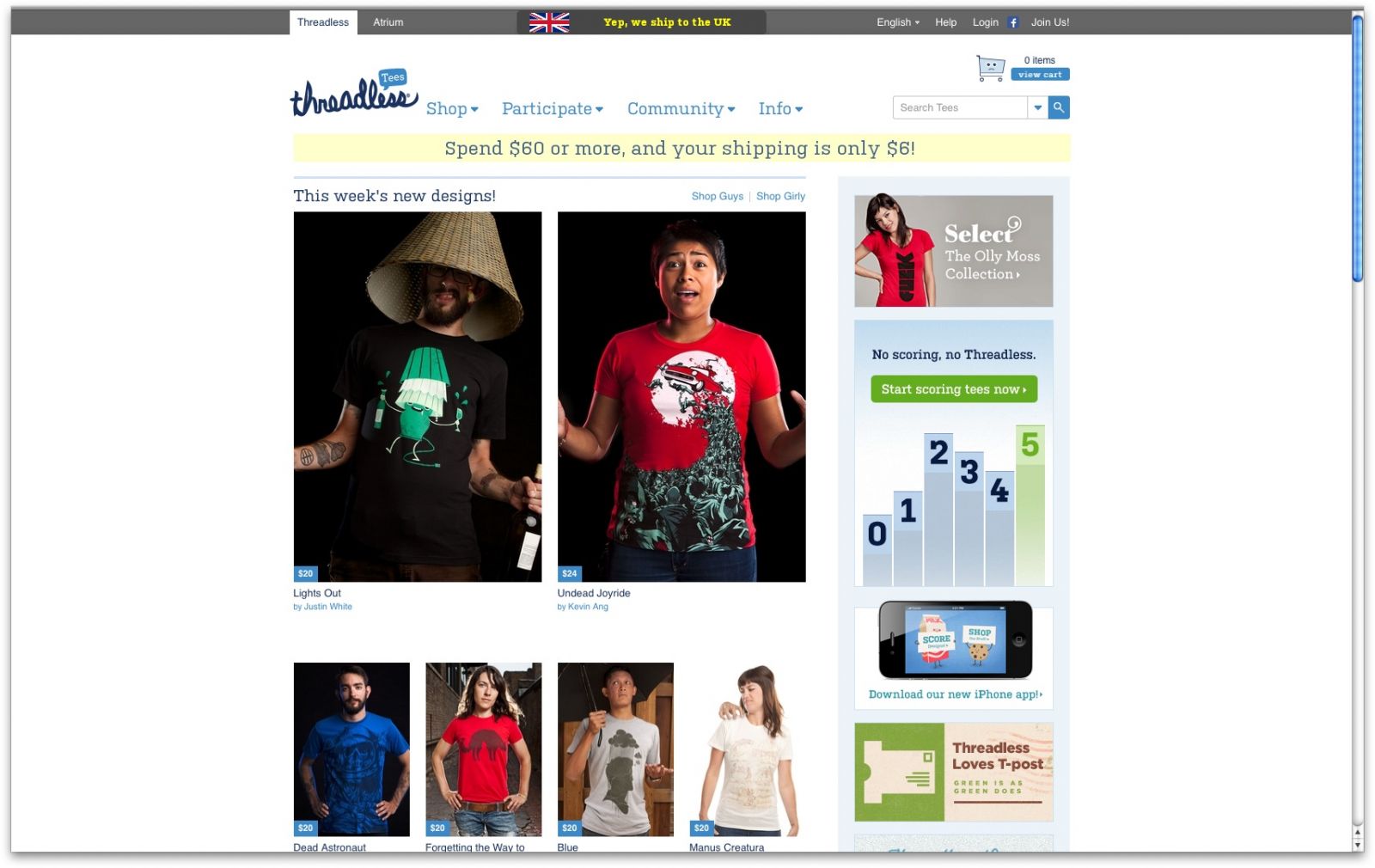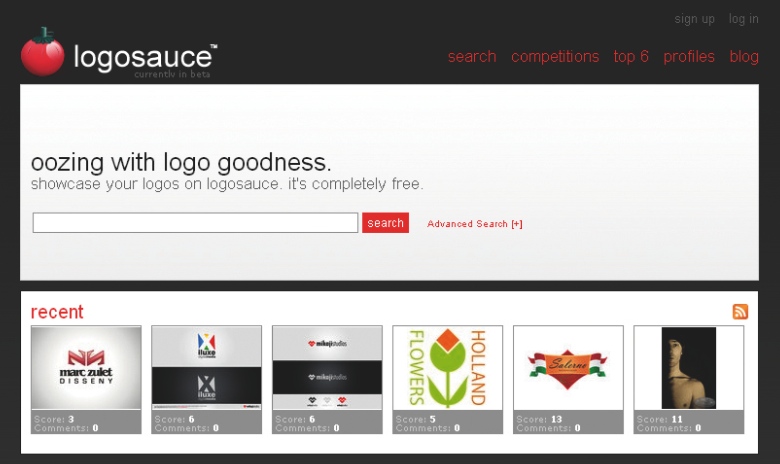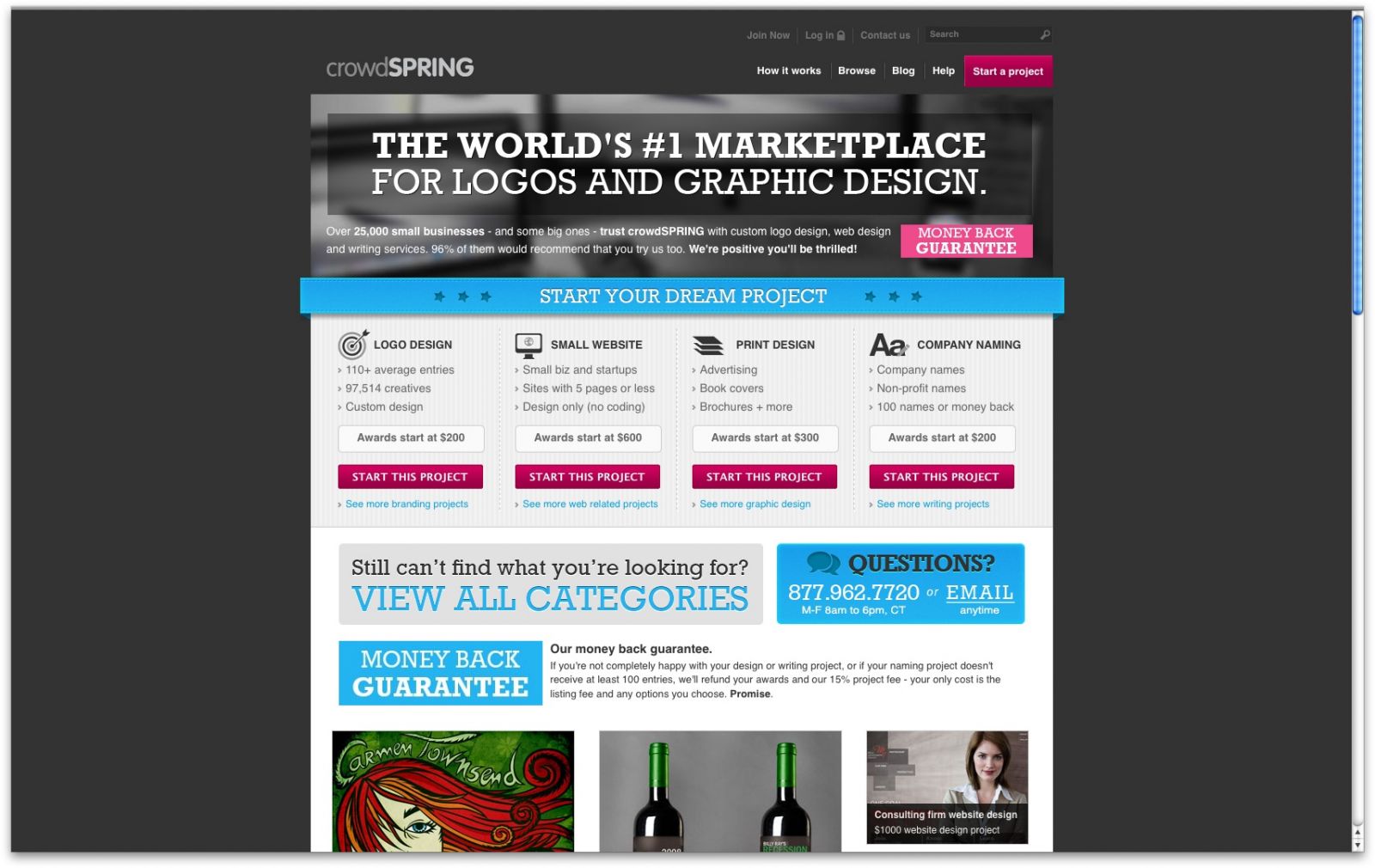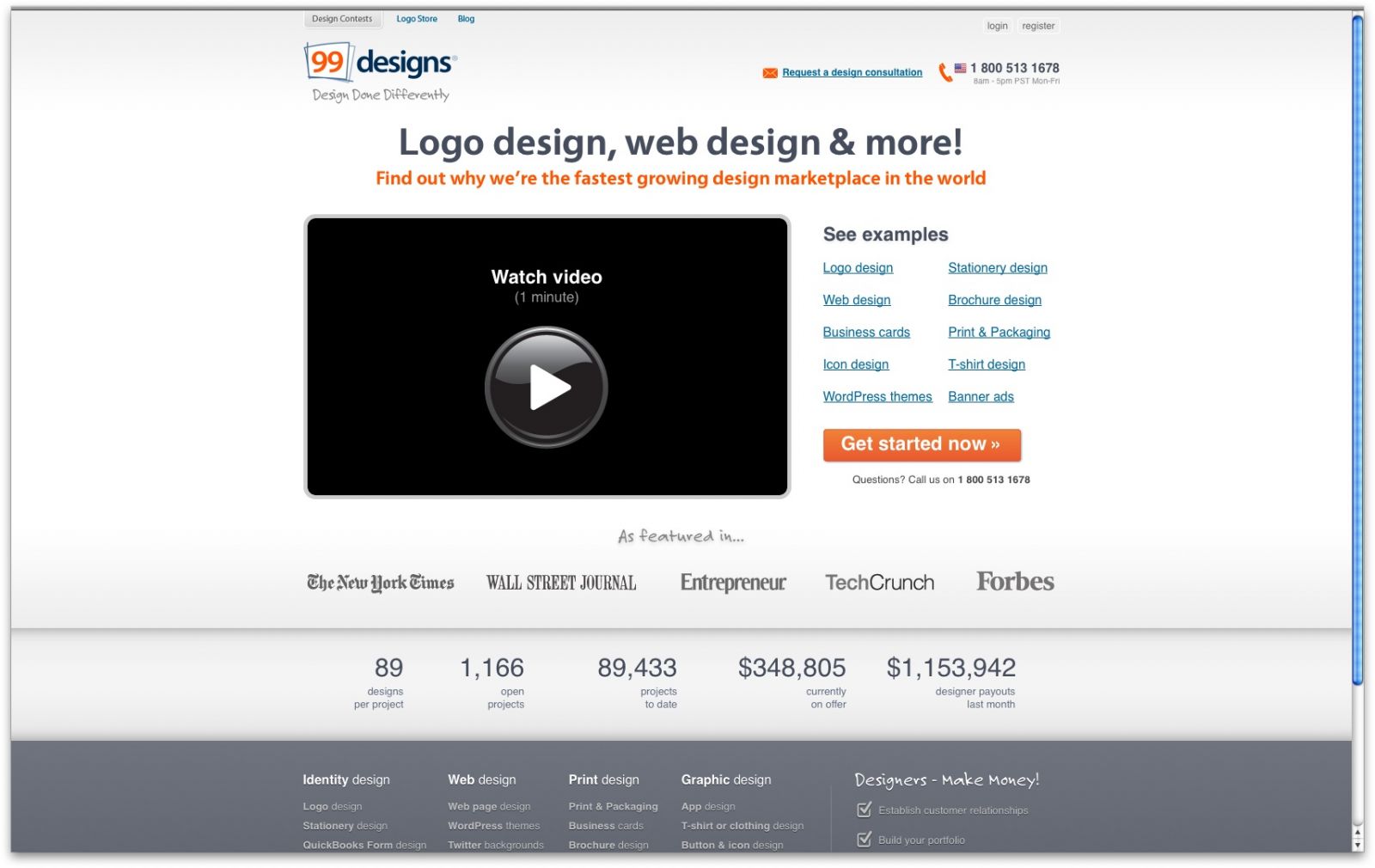Should designers do spec work?
It's the debate that refuses to die. Is working for free ever worth it? Karl Hodge weighs up the pros and cons of pro bono, design competitions, creative pitching and other forms of spec work
This article originally appeared in issue 191 of .net magazine - the world's best-selling magazine for web designers and developers.
Speculative work. In its strictest interpretation, this refers to any project that’s undertaken with no guarantee that you’ll be paid. Many web designers think this is a very bad thing indeed, driving down fees, devaluing the profession and encouraging a culture of poor design. Others think it gives them a way to get their work seen, building their portfolio and democratising the design process.
To decide which side of the divide you fall, it’s best to know exactly what is meant by ‘spec work’. The circumstances in which the description might apply are many – from pitching creative work all the way up to doing freebies for charity. That’s quite a range, with some practices more prevalent and less maligned among the anti-spec work lobby than others. Let’s take a look at those definitions and the arguments that go with them.
Definitions
Credentials pitching, the creative equivalent of prepping for a job interview, is on the very bottom rung of the spec work ladder. Sure, it takes time to sort out your portfolio, tailor your presentation and attend a meeting, but few of us would begrudge the fact that a new client might want some face time before actually signing up for your services. This is especially true if you’re relatively new to the industry.
But increasingly, clients will ask for more than a flick through your CV and a look at some links. They’ll want you to sketch out ideas or even show them a mock-up or two. This is ‘creative pitching’ and chances are that if you’re asked to do it, you’re not the only outfit in your client’s sights.
This is the point at which all the arguments for and against spec work begin to mean something. There are two types of creative pitching: the kind where you invoice your client at the end of the process and the kind where they look at you like you’re from Mars when you tell them your day rate. When design is your job, creative pitching for free is working for free.
Whether you think that’s good or bad for your business will depend on a number of factors – in particular, how well established you are.
Get the Creative Bloq Newsletter
Daily design news, reviews, how-tos and more, as picked by the editors.
Offering ideas
“We get asked to pitch ideas. We say ‘no’,” chuckles Paul Boag, creative director at Headscape. “Actually, it’s not so black and white. Once in a blue moon we’ll do it. Our attitude is that if they’re immediately fighting us over our process and way of working then that doesn’t bode well for the rest of the project.
“I’m talking literally about spec work here though: doing design work up front,” Boag continues. “We put a huge amount of effort into our proposal writing, which is full of screenshots of other pieces of relevant work. We pour effort and time into the sales process. We just don’t feel that producing designs up front is a) the most convincing argument and b) the best use of time for the client.”

Practical pitching
Other agencies take a more pragmatic approach to free pitching. “We’re a reluctant participant,” says Fraser Black of branding agency Firedog. “It’s a buyer’s market – a very competitive, crowded market – the design business.” He suggests there may be some benefit in trying to persuade clients that a credentials pitch, with some case studies and budget discussion, might be an acceptable alternative to a full creative pitch.
“We’re very detailed in the way we track and trace our participation in pitching. In fact, every pitch is assigned a job number.” That way, the company knows exactly what they’ve spent on the process – which helps when costing future projects. They can also tell what’s paying dividends – and credentials pitching wins. “Credentials pitching is 60 per cent more successful for us than full creative pitching – but even then you have hard costs associated.”
Even when an agency accepts that free pitching is part of the process, they acknowledge its downside. “Some companies treat this process as the project itself and struggle with the idea of ‘a concept’,” says Mark Allaradice, Pod1’s head of creative. “To fully answer a brief you need sufficient research, strategic planning and an understanding of the client’s objectives. This will not come out of a creative pitch, but will evolve through a relationship with the agency and the client upon winning the project.”
Winner takes all
While creative pitching may divide opinion – with some saying it’s working for free and others saying it’s a necessary step in the struggle to win jobs – everyone loves a competition, right?
Wrong. Campaigning website NO!SPEC says that design competitions are just vast, indiscriminate creative pitches.
“Creative competitions sidestep the importance of the client/designer relationship. Competitions and speculative projects are about winning the work,” reads a template letter that the campaign suggests designers send to competition organisers. “Choosing a designer or firm is about getting the right professional for the project. Requests for speculative work erode the relationship and are a substitute for a client doing their homework.”
Not all competitions are for high stakes, but the anti-spec lobby can take a dim view of any request for design work without payment. Carsonified discovered this when an innocently worded blog post asked the design community to create a slide for its Future of Web Design conference. Nearly 200 comments followed, almost half of them accusing the design and web company of promoting unethical practices.
“We were a bit blindsided by the reaction to that,” says Ryan Carson, head honcho at Carsonified. “I’ve been involved in design for a number of years and up until that point I’d never heard anybody call a ‘for fun’ competition spec work. It’s vital for young designers to do competitions like this to promote themselves.”
In this instance there was no ‘work’ to be had. The slide that designers were asked to create would never have been a paid job – the opportunity was created specifically for the competition. But competitions can replace the pitching process too. The LogoSauce website specialises in this, giving clients an interface where they can publish their requirements and participants from around the globe can upload as many designs as they like. With competitions attracting between 30 and 50 entries and ‘prizes’ rarely over $200, that’s a lot of work for little return. And there can only be one winner. Many entries see nothing for their effort.
Still, LogoSauce is keen to defend its stance. “Competitions aren’t meant to replace the
designer pitching process,” says David Vaasen, the man behind the site. “Instead they should be seen as a complementary way to raise a designer’s profile, meet new clients and more.”

Crowdsourcing design
Which neatly brings us to the most definitive form of spec work in the canon. It’s becoming common practice for companies to put design briefs out for competition on dedicated websites. Sites like 99Designs and IdeaBounty boast posted projects where submissions can be counted in the hundreds. Remuneration is usually well below industry standard rates. Even some designers who are philosophical about competition in other circumstances are uncomfortable with the practice.
“Clearly real spec work is a problem,” says Ryan Carson. “We’re against the use of sites like 99 Designs and CrowdSPRING.” Predictably, the companies providing this kind of service don’t see it that way. CrowdSPRING has argued that the folks complaining about its way of doing things are behind the times.

“The internet has blurred the boundaries between professionals and non-professionals,” writes Ross Kimbarovsky, co-founder of CrowdSPRING, at 37 Signals. “The underdogs are challenging tradition in industry after industry. They are risk takers. They are true entrepreneurs. The underdogs compete on their ideas and their work, not education, training and fancy offices. They make things they like and hope that other people will like them too.”
It’s quite a rallying call, one that characterises the internet as a democratising medium, a meritocracy where book learning and experience count for less than the ability to meet a brief. You can be an experienced design agency, a student fresh out of college or a kid with a pirate copy of Photoshop. To CrowdSPRING, everyone’s the same.

Fun for free
The final step in the spec work staircase is ‘pro bono’ work; work that’s contracted entirely for free. The term comes for the Latin phrase pro bono publico, meaning ‘for the common good’. The anti-spec work lobby’s attitude to this practice might surprise you. “Working pro bono is an excellent, ethical way to boost your portfolio,” say the NO!SPEC guidelines. In its traditional meaning, pro bono work is undertaken when the client would not normally be able to afford your services, such as designing a logo for a charity or putting together a site for a community organisation.
However, you might find a very occasional case where a prospective client with no charity or community qualifications will ask for similar treatment. In May last year, the website for Channel 4 mentalist Derren Brown published a call for “professional designers only” to help revamp its pages “pro bono”. The only reward promised was a chance to “raise their professional profiles”.
The resulting design, a regularly updated blog at Derren Brown Art went live in 2009. When we contacted Phillis Dallas, the winner of the contract, he sounded chuffed to have landed the gig. We asked him why an organisation that could afford to pay for professional web design would ask for work to be done for free?
“Firstly, the DB crew wanted to see what was out there. Secondly, there needed to be an incentive for the designer to create something they would really own. To get an agency to manage a blog is very costly.” The main reward for taking on the task seems to be that it’s a whole load of fun. “We’ve had so many nice emails and well over six million hits on the blog without any advertising, and sometimes we say, ‘Oh yeah – look at us go,’ and pull a He-Man pose. If money is the only reason you do something then go be a lawyer or doctor – they get paid far better.”
Speculative market
A range of practices can be stamped with the spec work label. What you feel personally comfortable with may differ from the next designer in the food chain. Before you make up your mind, though, it’s wise to consider both sides of the argument.
At the beginning of a career, there are few opportunities for young designers to build a portfolio; spec work increases that chance. “Being relatively new to freelancing, I have to look at any opportunity that presents itself,” says Alex Blundell, who runs web design business Pixel Horizon. “At the moment, 50 per cent of my time is spent working with paying clients and the other 50 per cent is self promotion. Hopefully this will all pay off and my business will grow to a point where I don’t have to consider doing spec work.”
Sites like CrowdSPRING and 99Designs say that spec work enables anyone to pitch for work regardless of their credentials. The work must speak for itself. It could also be said that speculative competitions give ‘D-list’ companies a chance to access a pool of design talent on the net.

Who suffers?
Some argue that it’s those businesses at the low end of the scale that suffer most from the competition trend. “Businesses are no longer creating long-term relationships with talented designers in favour of the spec-work route,” says Alex Blundell. “They have a choice to either use the best work or the cheapest work, and usually it’s the latter, forcing everyone to lower prices to remain competitive.”
Conversely, once you get to agency level and can name your price, the costs of creative pitching are passed back to clients, says Paul Boag. “As speculative work is part of the sales process, they ultimately have to charge you for it. The web designer is forced to roll the cost of that work into the project if they win. However, it’s worse than that. The web designer also has to recover the cost of speculative design done for jobs he didn’t win.
Paul also suggests that spec work removes collaboration from the process. “Design is a collaborative process between the designer and the client. The designer may have the expertise in design aesthetics and usability, but the client knows their business and target audience.”
The most damning argument is that spec work devalues the profession. Ross Kimbarovsky of CrowdSPRING counters this. “Experience doesn’t always translate into great design,” he argues. “Education doesn’t guarantee great design. Fancy offices don’t ensure great design.” While this may be true, experience, education and professionalism help make someone with good ideas into the best designer they can be. Ultimately, there’s only one person who can choose whether working for free works for you – and that’s you.
What do you think – is working for free a betrayal of the design profession or a necessary evil? Let us know in the comments below!

Thank you for reading 5 articles this month* Join now for unlimited access
Enjoy your first month for just £1 / $1 / €1
*Read 5 free articles per month without a subscription

Join now for unlimited access
Try first month for just £1 / $1 / €1
The Creative Bloq team is made up of a group of design fans, and has changed and evolved since Creative Bloq began back in 2012. The current website team consists of eight full-time members of staff: Editor Georgia Coggan, Deputy Editor Rosie Hilder, Ecommerce Editor Beren Neale, Senior News Editor Daniel Piper, Editor, Digital Art and 3D Ian Dean, Tech Reviews Editor Erlingur Einarsson, Ecommerce Writer Beth Nicholls and Staff Writer Natalie Fear, as well as a roster of freelancers from around the world. The ImagineFX magazine team also pitch in, ensuring that content from leading digital art publication ImagineFX is represented on Creative Bloq.
